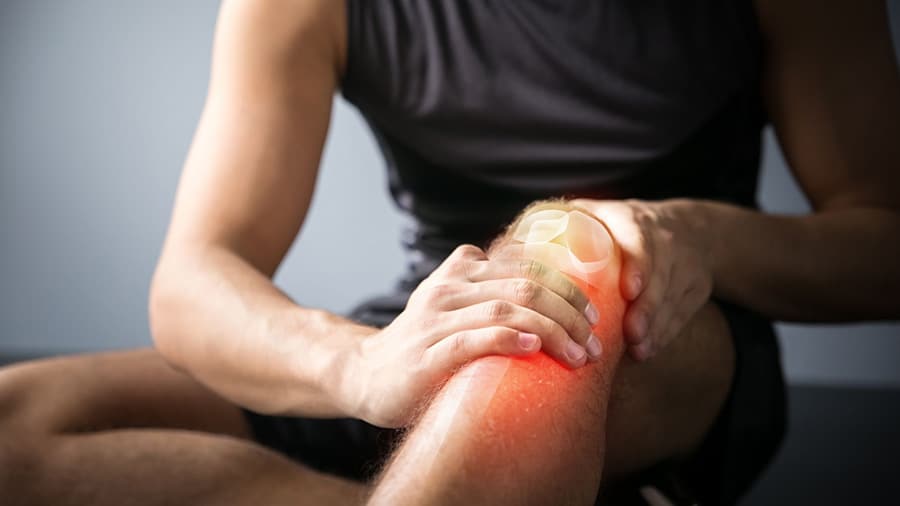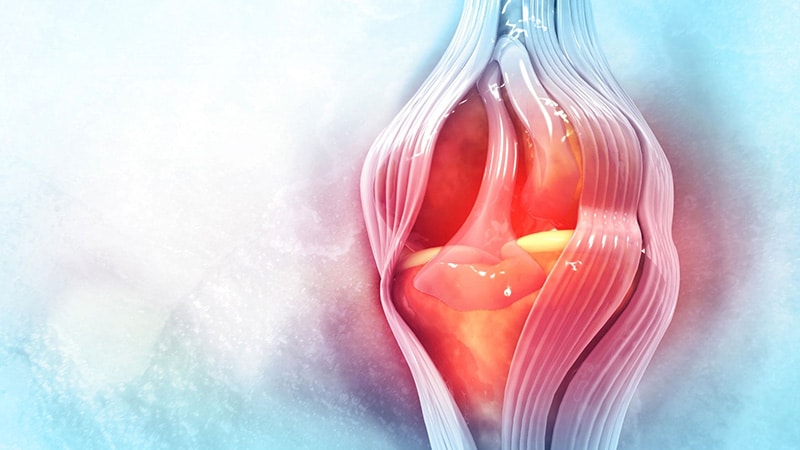The painful joints are a real handicap, both for the practice of bodybuilding and for the activities of daily life. They can be the result of a lack of warm-up, ofovertraining, of a past trauma or a bad diet. However, these pathologies are not inevitable. So, how can we relieve joint pain quickly ? That's what we'll find out in this article.
What causes joint pain?
Joints are the elements of the human body that connect the bones to give them mobility. They therefore play a fundamental role in daily life, whether it is to move or to get around.
More precisely, the movement of a joint is made possible by the cartilage located at the ends of the bones. As for the ligamentsThey ensure the stability of the whole.
Trauma or pathologies affecting the joints are therefore very disabling, and often extremely painful. The knee, the hip, the shoulder and the ankle are undoubtedly the joints most prone to pain.
The aging is often the main reason for joint pain. As we age, the cartilage deteriorates and no longer allows the bones to glide smoothly during movement. This is calledosteoarthritis. Osteoarthritis of the knee is the most common. This pathology is generally linked to an effusion of synovium (or synovial fluid), which is characterized by a swelling of the joint and a loss of mobility.
Inflammatory diseases such as arthritis are also common. Gradually, a certain stiffness appears due to the increasing fragility of the connective tissue located in the ligaments and tendons.
In addition to aging, joint wear and tear can also be the result of a past injury (repeated sprains, ligament rupture, etc.) or a situation of overweight.
Why do you need to protect your joints?
As with any physical activity, joints are put to the test in weight training.
The heavier the loads used during your workouts, the greater the stress placed on your joints. Eventually, this can cause more or less persistent pain. The tendinitis are a perfect example.
These injuries are a hindrance to your progress. An injured athlete is forced to observe a period of rest or to adapt his training.
Over the long term, unprotected joints can lead to chronic pain. For people with joint problems, the smallest of daily gestures become a real ordeal.
Fortunately, thanks to a few tricks, it is possible to limit joint pain and mitigate the effects of time.
Tips for taking care of your joints
If you practice weight training, you can prevent and alleviate pain in your knees, hips, wrists or shoulders by taking these good reflexes:
- Warm up well before each workout,
- perfecting the technique of execution,
- get enough rest,
- take care of nutrition and hydration,
- stretch,
- use the right weight training accessories.
The warm-up
To avoid joint pain and tendonitis, it is essential to perform a warming up before each training session.
This phase allows you to prepare your body for the effort you will be putting into it and to preserve your joints for the long term. A good way to warm up your joints is to start each exercise with very low weight sets.
The execution technique
Learning the right moves is equally important to keep you from injuring your joints.
Too often, the bodybuilders seek to increase the weights used at the expense of the technique of the exercise. It is far better to push 80 kilos with good technique than 100 kilos with poor execution.
This applies to all exercises, whether it's the bench press, deadlift or squat. By perfecting the movements, your muscle gains will be more important and your body will be protected.
The rest
If you are in pain, the best way to relieve joint pain quickly is to take rest. It is of course recommended to consult a doctor who will prescribe anti-inflammatory drugs to reduce the pain.
Rest is also ideal for prevention. Personally, I stop my weight training program for 1 week every 2 to 3 months to let my muscles and joints recover. This allows me to calm down the eventual inflammations.
I take the opportunity to do low to moderate intensity cardio activities such as swimming, cycling or walking.
The food
Keep in mind that everything you consume has an impact on your performance and your health. It is therefore essential to eat well (unprocessed products, fruits and vegetables, etc.) to avoid future joint pain. Make sure that your carbohydrate and protein intake is sufficient.
Some food supplements can help you limit joint pain:
- vitamin C,
- glucosamine,
- collagen,
- fatty acids such as omega-3.
Stretching
Perform regularly stretching sessionson your rest days or a few hours after your sport session, to improve your joint mobility.
Over time, muscles and joints will be able to perform movements with greater range of motion. Even as you age, you will maintain your flexibility and improve circulation.
A simple stretching of the quadriceps can, for example, help to calm a painful knee.
The accessories
Finally, if your joints are fragile, it is possible to use fitness accessories to relieve tension during training.
Knee pads are effective in protecting the knees and gaining strength when doing squats or deadlifts. The same is true for elbow pads.
For pulling exercises, wrist protection straps are also of interest.
Conclusion
Whether occasional or chronic, a painful joint can ruin your life and prevent you from progressing in strength training. Fortunately, there are solutions to prevent and alleviate the pain. Very often, lack of warm-up before a workout, poor exercise technique or lack of rest are at the root of it. Now you know how to take care of your joints.









